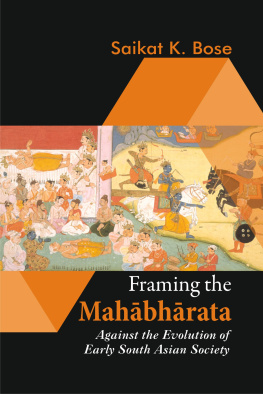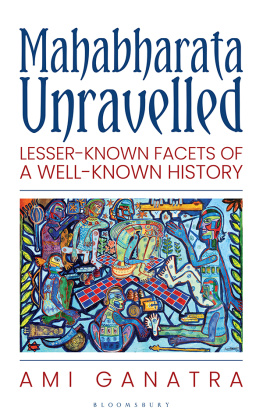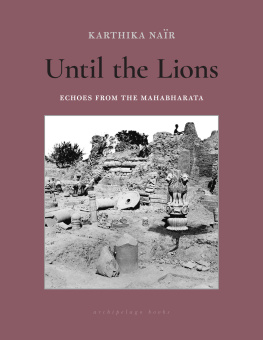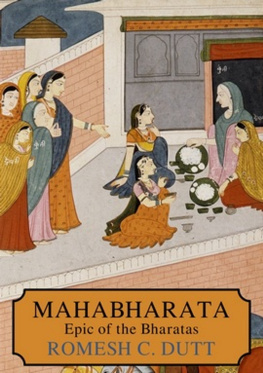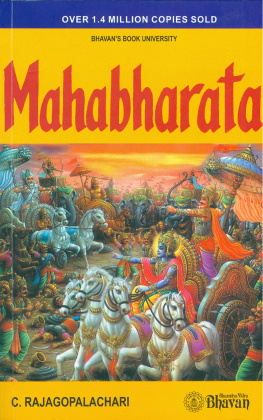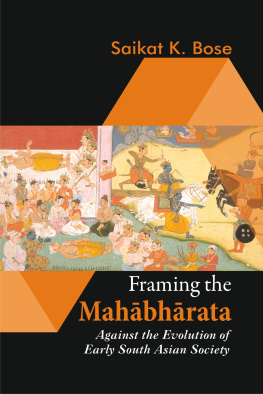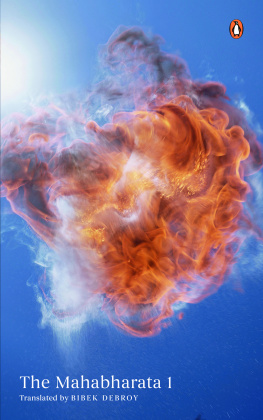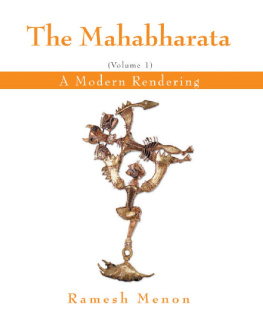Framing the Mahbhrata
Other Works by the Author
Boots, Hooves, and Wheels: And the Social Dynamics behind
South Asian Warfare
Framing the Mahbhrata
Against the Evolution of Early South
Asian Society
Saikat K. Bose

Vij Books India Pvt Ltd
New Delhi (India)
Published by
Vij Books India Pvt Ltd
(Publishers, Distributors & Importers)
2/19, Ansari Road
Delhi 110 002
Phones: 91-11-43596460, 91-11-47340674
Fax: 91-11-47340674
e-mail:
Copyright 2018, Saikat K. Bose
ISBN: 978-93-86457-55-4 (Hardback)
ISBN: 978-93-86457-57-8 (ebook)
All rights reserved.
No part of this book may be reproduced, stored in a retrieval system, transmitted or utilized in any form or by any means, electronic, mechanical, photocopying, recording or otherwise, without the prior permission of the copyright owner. Application for such permission should be addressed to the publisher.
The views expressed in the book are of the author alone, and do not represent views or opinions of the Indian Army, the publishers, or any other institution in any manner whatsoever.
To my Father

I do three things in Framing the Mahabharata. The first is, I try to inspect the nature, content and structure of the epic, hoping to identify who the groups, peoples, and individuals involved in the war, and what their reasons to go to war, were. I thus try to see what each of these groups or individuals hoped to win or stood to lose, and how each defined winning and losing. Assuming I get this correct, I then seek to understand how they fought, aiming at a reconstruction of the course of battle.
Next, I examine the consequences of the war, aiming to understand how the war impacted evolution of South Asian society. Surveying several disciplineshistory and ethnology, military science and technology, sociology and economics, comparative mythology and religionI build on insights of several experts (and respectfully deconstruct those of several others) to construct a model of early IndoEuropean and IndoIranian folk movement. It is against this backdrop that evolution in lifestyles, social norms, warfighting procedures, and the numerous correlations between these aspects, are framed. For instance, an aspect that most poignantly illustrates the evolution is the emergence, growth, culmination, and obsolescence of war-chariotry.
The third thing I attempt in this work is to place the epic story, its associated compendia of narrative material, and narrative traditions of South Asia, against the backdrop of evolving socioeconomics and religious consciousness over the more-than-a-millennium gap between the war and the appearance of the first acknowledged extant version of the epic. This helps not only understand the classical forms of current South Asian religious thought, but also the societal forces that gave the epic its shape and timbre, making it what it is today.
The war, which is the epics centrepiece, occurred among peoples at the cusp of the Bronze and Iron Ages, and situated at different points of view in a very dynamic milieu. This milieu had resulted from semi-nomadic and pastoral social forms coming to terms with forms that were at various stages of being sedentary, agrarian, and urbanized. Thus, tales and battle-lays kept evolving, taking on hues, colours, and purposes, often becoming rather unrepresentative of reality. Also, the epic acquired endless tales nested into tales, often with no relation to the plot, and for a variety of purposes not all related to the narration of the battle-story. In the process, individuals, groups and events got covered with hyperbole, engendered by evolving social consciousnesses and agendas. This naturally led to many apparent exaggerations, misrepresentations and inconsistencies, which makes it difficult to take every event in the epic at face value.
The renascence of mythology, seen in books on myth, religion and epic flooding bookshelves in Indian, Europe, Africa and the Americas, has had a social cost. Where older generations had grown up with personal ideas of epic or mythic landscapes, characters and events, younger generations today, under audio-visual assault of television, movies, animations, video and computer games, harbour corporatized and homogenized ideas of these things. In other words, others having done their imagination for them, power of imagination of the growing generations is stifled. In such a situation, it is easy to promote the epics as vivid costume dramas, often sponsoring sanitised but inaccurate, and anachronistic, ideas.
The above discussion shows that, just as it would be impractical to accept everything at face value, discarding the epic in its entirety as ahistorical would be akin to throwing the baby out with the bath-water. I say this because much of the exaggerations do portray socioeconomic backdrop of the epicif nothing, they represent what people that wrote, edited, modified and used the epic, thought and felt about their past, present, and future.
What I do here is to seek a mean. I deal with events and characters not as historically accurate facts, but as concepts, after stripping them of hyperbole and agglomerated layers. Indeed, these were concepts, and very much live at that time, their resolution impacting the community in several crucial ways. For instance, whether Kara or Avatthm were indeed chiefs of nomad tribes of the Northwest or not, there were nomad chiefs of the Northwest who impacted the dynamics of the IndoGangetic plains in the way represented in the stories of the epic Kara or Avatthm. Likewise, I treat the Yadu as a conglomeration of pastoral groups jostling for control over the southern end of the IndoGangetic Divide, at that time in the throes of changing social formats represented by Kasas attempt to subvert the matrilineal succession and Krishnas leading away the Vi, a more rugged, nomadic sept of the Yadu. In other words, whether these personae, families and tribes were real or not is not importantwhat is important is that such occurrences and traditions were real, have been noted in many parts of the world, and might not have been improbable in this part of the world, too.
It is these aims that I try to achieve, hoping at the end of the steps outlined above, to create a base model for early South Asian society which can be built upon. I also hope that this work will contribute towards restoration of part of the lost imagination.

This book seems to have taken shape on its own, while I worked on my earlier book and also indulged myself in the reading of comparative mythology. Thus, all persons who I thanked for my first work I thank again. As I thank innumerable others who have helped me specifically in this venture. Acknowledging the influence of those who built up in me, on the one hand, love for the epic and mythology, and on the other, a love for rational investigation, I want to thank the older generations of the nation, and specifically my parents.
I want to thank that splendid brotherhood, my battalion, which I spent some of my happiest years with. My friends Prateeksha and Sukanya have, as always, been great helps in the shaping of my ideas, giving the ideas their forms, and helping me put them on paper sensibly. I can never thank Brigadier Hardeep Narang enough for his kindness in giving me unrestrained access to his wondrous library of military images, a masters work in itself. I specifically want to remember Gajinder, Ratan, Arjun and Anil, for making sure I had the leisure to work on the project without having to think too much of other things. Brigadier PK Vij has always been a guide who was there, encouraging me and letting me know I could count upon him.
Next page
